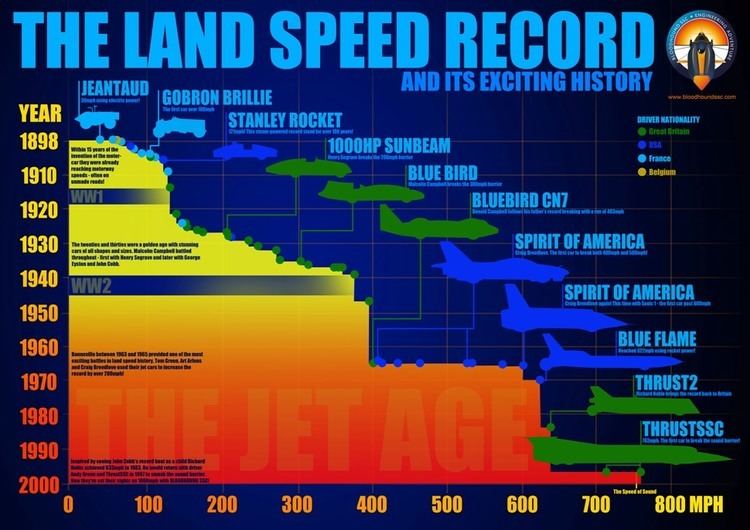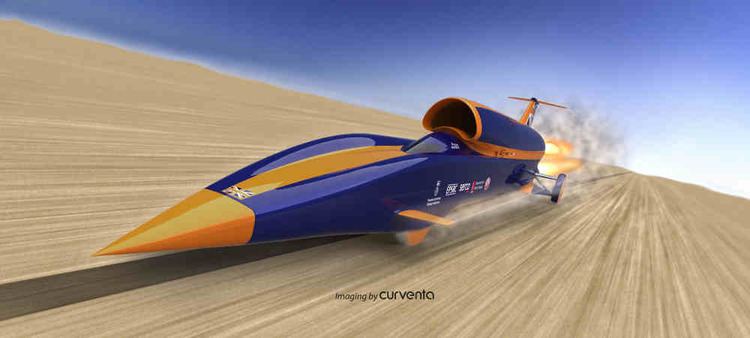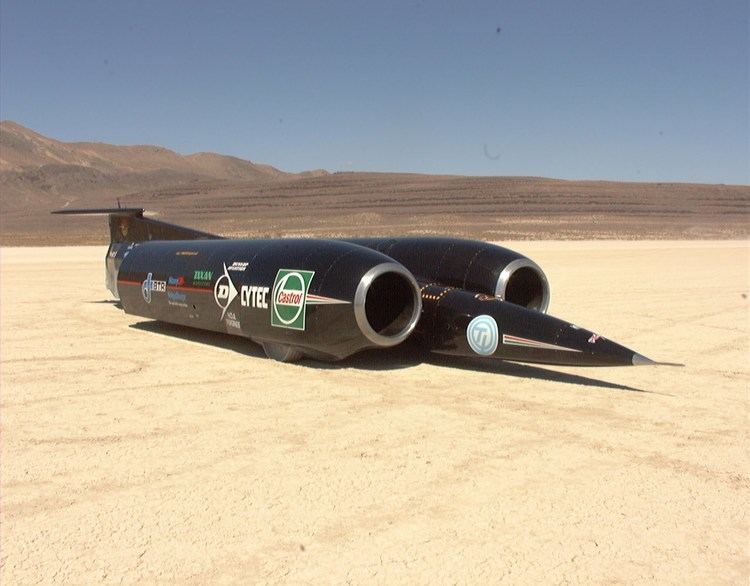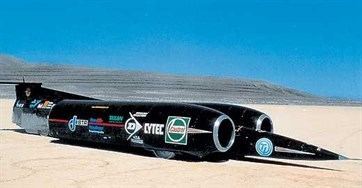 | ||
Venturi smashes ev land speed record
The land speed record (or absolute land speed record) is the highest speed achieved by a person using a vehicle on land. There is no single body for validation and regulation; in practice the Category C ("Special Vehicles") flying start regulations are used, officiated by regional or national organizations under the auspices of the Fédération Internationale de l'Automobile. The land speed record (LSR) is standardized as the speed over a course of fixed length, averaged over two runs (commonly called "passes"). Two runs are required in opposite directions within one hour, and a new record mark must exceed the previous one by at least one percent to be validated. There are numerous other class records for cars; motorcycles fall into a separate class.
Contents
- Venturi smashes ev land speed record
- History
- Womens land speed record
- 1963present jet and rocket propulsion
- 1965present wheel driven
- References

History

The first regulators were the Automobile Club de France, who proclaimed themselves arbiters of the record in about 1902.

Different clubs had different standards and did not always recognise the same world records until 1924, when the Association Internationale des Automobile Clubs Reconnus (AIACR) introduced new regulations: two passes in opposite directions (to negate the effects of wind) averaged with a maximum of 30 minutes (later more) between runs, average gradient of the racing surface not more than 1 percent, timing gear accurate within 0.01sec, and cars must be wheel-driven. National or regional auto clubs (such as AAA and SCTA) had to be AIACR members to ensure records would be recognized. The AIACR became the FIA in 1947. Controversy arose in 1963: Spirit of America was not recognised due to its being a three-wheeler (leading the Fédération Internationale de Motocyclisme to certify it as a three-wheel motorcycle record when the FIA refused) and not wheel-driven so the FIA introduced a special wheel-driven class. No holder of the absolute record since has been wheel-driven.
Women's land speed record
In 1906 Dorothy Levitt broke the women's world speed record for the flying kilometer, recording a speed of 91 mph (146.25 km/h) and receiving the sobriquet the "Fastest Girl on Earth". She drove a six-cylinder Napier motorcar, a 100 hp (74.6 kW) development of the K5, in a speed trial in Blackpool. A subsequent record was held by Lee Breedlove, the wife of Craig Breedlove, who piloted her husband's Spirit of America - Sonic 1 to a record of 308.506 mph (496.492 km/h) in 1965, making her the fastest woman alive, as of 1974. According to author Rachel Kushner, Craig Breedlove had talked Lee into taking the car out for a record attempt in order to monopolize the salt flats for the day and block one of his competitors from making a record attempt.
The current women's land speed record is held by Kitty O'Neil, a stuntwoman who in 1976 drove a jet-powered vehicle named the SMI Motivator to reach an average two-way speed of 512.710 mph (825.127 km/h) at the Alvord Desert. Through her career as a stuntwoman, she met Bill Fredrick, the stunt technology maker and high-speed car designer who built the "Motivator" vehicle. A $20,000 contract afforded O'Neil the chance to drive the car in an attempt to break only the women's land speed record; Kitty O'Neil was contractually obligated not to attempt to break the broader land speed record, so that movie director and fellow stuntperson Hal Needham could make the attempt instead.
In 1977 O'Neil also piloted a hydrogen peroxide powered rocket dragster built by Ky Michaelson and set an all-time, albeit unofficial record in the quarter mile at 3.22 seconds at a top speed of 412 miles per hour (663 km/h).
1963–present (jet and rocket propulsion)
Craig Breedlove's mark of 407.447 miles per hour (655.722 km/h), set in Spirit of America in September 1963, was initially considered unofficial. The vehicle breached the FIA regulations on two grounds: it had only three wheels, and it was not wheel-driven, since its jet engine did not supply power to its axles. Some time later, the Fédération Internationale de Motocyclisme created a non-wheel-driven category, and ratified Spirit of America's time for this mark. On July 27, 1964, Donald Campbell's Bluebird CN7 posted a speed of 403.10 miles per hour (648.73 km/h) on Lake Eyre, Australia. This became the official FIA LSR, although Campbell was disappointed not to have beaten Breedlove's time. In October, several four-wheel jet-cars surpassed the 1963 mark, but were eligible for neither FIA nor FIM ratification. The confusion of having three different LSRs lasted until December 11, 1964, when the FIA and FIM met in Paris and agreed to recognize as an absolute LSR the higher speed recorded by either body, by any vehicles running on wheels, whether wheel-driven or not. Thus, Art Arfons' Green Monster was belatedly recognized as the absolute LSR holder, Bluebird the holder of the wheel-driven land speed record, and Spirit of America the tricycle record holder. No wheel-driven car has since held the absolute record.
1965–present (wheel driven)
There is no "wheel-driven" category as such. The Fédération Internationale de l'Automobile validates records in a variety of classes, of which the "wheel-driven" classes are in Category A (Special cars) and Category B (Production cars). The accepted record is fastest average speed recorded over any one-mile or one-kilometer distance, averaged over two runs in opposite directions (to factor out wind) within one hour of each other. The most recent wheel-driven record holders have been from a variety of different classes within Category A.
Since 1965, holders of the wheel-driven land speed record have been:
